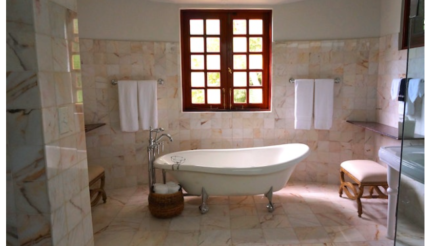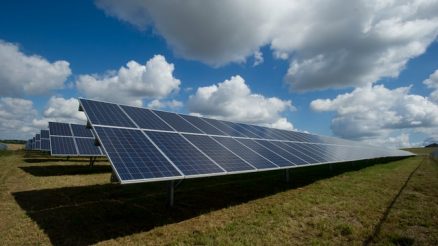When you go to a sports game at night these days, you can see your favourite players almost as perfectly as you would in the day. But it wasn’t always like that, because flood light technology has been racing forwards ever since the late 1800s, when the first whopping-great incandescent bulbs mounted behind giant reflectors lit up a British football match in Sheffield.
Today, the new flood light gold standard is LED technology – and it’s no surprise why. Light Emitting Diodes are cheaper and more robust, they last longer and run cooler, they’re ease to use and maintain, they use less energy and don’t emit carbon, the light turns on instantly and is bright and intense, and the directionality, colour and ‘colour temperature’ is highly flexible. On top of it all, they look simple, sleek, modern and elegant.
And while professional sports is where the LED flood light manufacturers really push their technology to new limits, the trickle-down effect throughout the entire spectrum of industry and business has been impressive. Today, there are so many different types of LED floodlights in all shapes and sizes, and each of them can be used for many different purposes. From stadiums and warehouses to outdoor areas, for security or for billboards or for shops and storage and events and projects of so many kinds, businesses and organizations all over the world are readily adopting LED technology for their floodlighting solutions and reaping the operational and cost benefits.
So if you know what you need your new LED floodlights are for, you’re almost ready to talk to an expert about getting the product you need. But just before you do that, read up on the must-have features and specifications so you can be reassured your LED floodlights are truly fit for purpose.
Table of Contents
Here’s what to look out for:
1. The high luminous efficiency
With pre-LED flood lighting solutions, the wattage was much more important. But for a vastly lower wattage, LED is so much more efficient than halogen or incandescent technology – so what you should be looking out for in LED technology is the lumens. That’s the measure of the brightness, but also very important is the luminous efficiency of the LED options you have in front of you. In short, we’re talking about the lumens-per-watt ratio – or how much light you’re getting for the energy that will go in.
2. The quality of the chip
With every LED flood light package comes the LED chips – and there are various chip types. There’s the standalone surface mounted diode (SMD), the chip-on-board (COB), multiple on-board chips, and MCCOB – which stands for multiple chips and cups on board, which is commonly present in LED flood lights. Quality LED flood lights will, of course, need quality chips – because it’s the chip that is converting that electrical energy into light. And for truly great luminous and heat efficiency, a high quality combination of multiple chips is what your LED flood lights will need.
3. The heat dissipation
Although LED is so much more energy efficient than previous technologies, it’s a misnomer that they produce no heat at all – especially in high intensity flood lighting applications. So the physical design of the LED solution is crucial, because heat will still need to be dissipated. The best designs for heat dissipation tend to be lightweight and with hollow housing typically produced in aluminium.
4. The beam angle
A key benefit of LED is just how flexible the light characteristics are. As well as colour temperature, the colour itself and the intensity, the beam angle is crucial for floodlighting – and the options for LED are extensive. Whether yours has a highly focused beam or one with a much wider angle depends on the particular application, but be aware of extremely wide LED beam angles as the brightness at ground level can struggle.
With the basic variables right, and with expert, manufacturer-neutral advice and guidance, you’ll be more than ready to get a quality, efficient and solution-focused LED floodlighting array up and running for your specific organization and application. When seeking that expert advice, make sure they understand your objectives, budget constraints, and energy targets – and good luck with the next steps!



